Letting the Cat out of the Bag
A Short History of Cats in Montana
Lewis and Clark blazed a trail through Montana in 1804. It may be assumed that Lewis’s Newfoundland dog, Seaman, marked the territory as well. Although it was a matter of exploration for these particular humans and dog, the land was already well-known to both species. Humans, of course, had been here for at least 12,000 years, and fossil remains of dogs predate the advent of Europeans with estimates ranging back from as few as a thousand years to nearly ten thousand. There can be no doubt that many tribes were familiar with Canis familiaris.
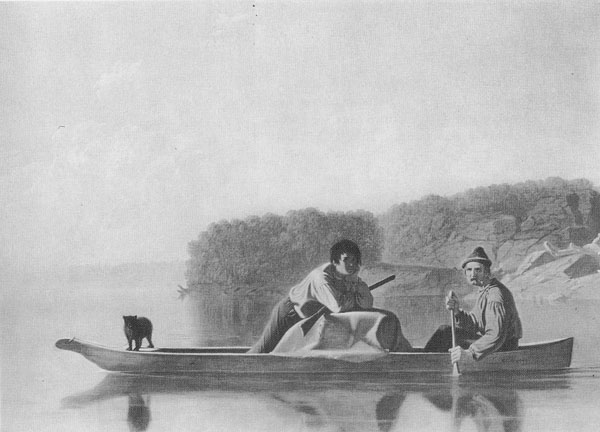
A newcomer which likely arrived with the first ships from the Old World was the rat, specifically Rattus norvegicus. It had needed no invitation to explore the northwest. As it had for millennia, it simply followed a meal ticket when trappers and traders moved up the Mississippi and onto the Missouri.
And what a meal ticket it was! Between pelts and food supplies, the rodents had a moveable feast. As the fur trade diminished, the rats found new providers—in uniform. By 1866, the army established Camp Cooke where the Judith River emptied into the Missouri. Roughly 50 miles north of present-day Lewistown, the camp requisitioned twice its required food supply in anticipation of rats eating half. Four years later, Camp Cooke was abandoned to the rats where the waters of the Judith mingled with those of nearby Dog Creek (one of several so named) as they joined the Missouri.
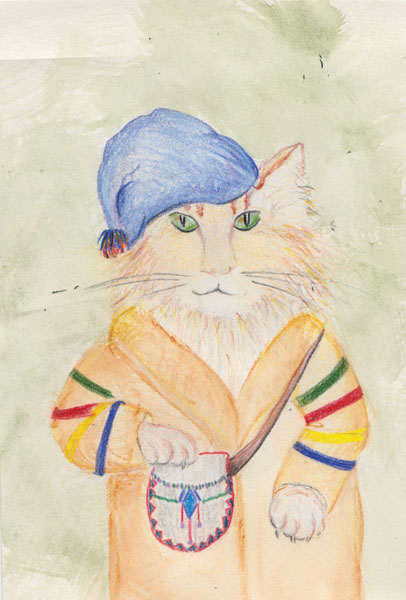
Quietly stepping into this new world of barking and gnawing was the cat, Felis catus, neither as cherished as the dog nor as uninvited as the rat.
People are fond of claiming “firsts” and in 1921, the Great Falls Tribune published the tale of a man who believed he had brought the first cat in Montana.
“First, biggest, only…” Such claims are always open to contradiction. He said that in the summer of 1862, the John White party had made their big discovery of gold in southwest Montana on Grasshopper Creek at Bannack. Bannack’s hopeful handful of miners was joined within months by 500 others. Ira Myers left Denver to join the stampede in 1863 with a well-provisioned wagon and $100 worth of plug tobacco, which he had been advised would be traded for the gold that miners were finding in such abundance.
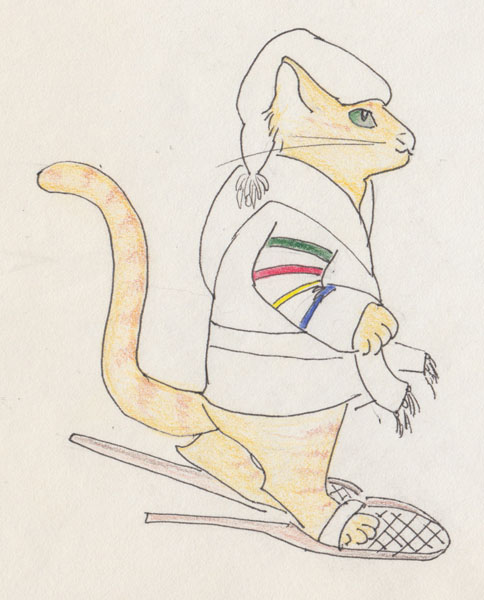
All these preparations left him with only $20 in his pocket. The first night out of Denver, he camped near some settled ranches and went to one to see if he could buy a little milk. There he saw a cat with seven kittens and offered $2.50 for one kitten.
This offer was refused but the rancher’s wife offered the old cat and all the kittens for the same price. He declined, but on returning to camp was talked into the deal by others in his party. His clothes were decanted out of his trunk and stuffed into a sack. A hole punched in the side of the trunk converted it into a satisfactory cat house for the mother cat and her brood.
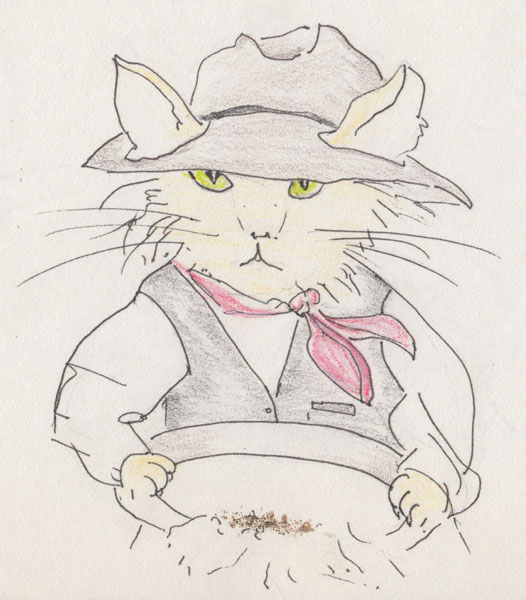
It was a large party, with 63 wagons and on the long journey, Myers recalled that his camp was the most popular, as “strong men, as well as women and children, gathered around the wagon to see the kittens romp and play in the grass.” He claimed that by the time he arrived at Bannack, the whole town turned out to see his furry little family.
He sold one kitten for $10 in gold dust, the other six for $15 each and kept the mother cat for himself. Furthermore, he sold his 100 pounds of tobacco at $5 a pound, thus confirming that cat houses and the fine old tradition of “mining the miners” were, indeed, the best ways to get rich in a gold camp.
As for whether these were really the first cats in Montana, the Great Falls Tribune hedged its bets by noting, “We understand that other citizens of Montana have contended for the honor, but we naturally prefer to back the claims of a Great Falls citizen unless convincing proof is brought forth to the contrary."
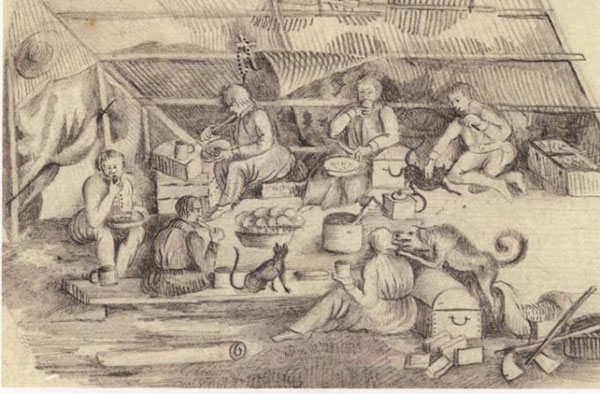
Well, stand aside, Mr. Myers, because convincing proof is there, as can be shown by a gradual journey into the past.
Among the records of the Pierre Chouteau Jr. & Co. from Fort Benton, is a complete inventory of the stock at the fort, dated May 4th, 1851. It’s an astonishing list, detailing dozens of bolts of fabric, women’s blanket dresses and boys’ summer pants. There were more than 700 pounds of beads, “common” scalping knives, tools, medicine, ten gross of suspender button and, on the very last page, one cat.
There were other animals on the list: Horses, mules, bulls, oxen, cows, calves, hogs, and pigs. A value was given for each animal. The cat was valued at five dollars, equal in value to a calf, a hog or five pigs.
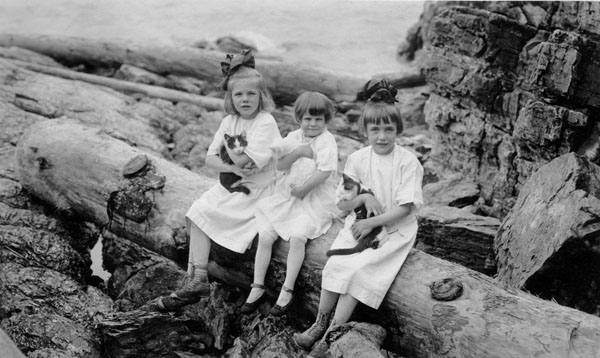
The Metropolitan Museum of Art in New York City boasts an 1845 painting by George C. Bingham (1811-1879) showing a stalwart cat standing at the prow of a canoe-like pirogue being paddled down the Missouri by a pair of fur traders.
Fort Union Trading post at the confluence of the Missouri and Yellowstone Rivers at the eastern edge of Montana was founded in 1828. Archeological explorations of the site by the National Park Service have turned up cat skeletons.
Cats were of such importance to the fur trade that it is easy to imagine that they would have accompanied any trapping or trading party, back to the earliest explorations.

Thirty-three years before Bingham’s painting, John Luttig of the Missouri Fur Company kept an interestingly punctuated journal of a fur trading expedition on the upper Missouri and noted that on July 31st, 1812, “This Morning we left our old she Cat at Camp, at breakfast I missed her and Mr. Manuel sent a Men [sic] for the Cat, he returned in the Evening with the Cat to our great satisfaction this Remark may seem ridiculous, but an Animal of this kind, is more valuable in this Country than a fine Horse. Mice are in great Abundance and the Company have lost for want of Cats, several Thousand Dollars in Merchandize, which were destroyed at the Bigbellies station, there has not a night passed since our departure from Bellefontaine where I got that Cat, that she has not caught from 4 to 10 Mice and brought them to her Kittens.”
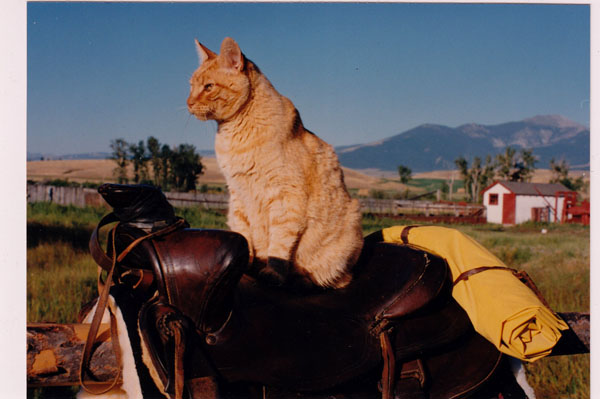
The mention of kittens in several fur trade accounts may provide a clue as to why cats were such accommodating travelers. Their offspring were hostages to their return from the hunt.
The “Mr. Manuel” referred to in Luttig’s journal was Manuel Lisa, who established the first trading post in Montana at the mouth of the Big Horn River in 1807. As one of the founders of the Missouri Fur Company, Lisa would have been well aware of the value of cats to such an enterprise.
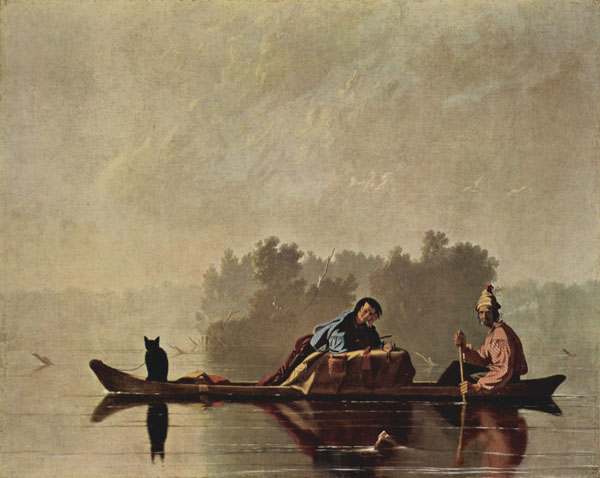
The Luttig journal and the Bingham painting bring the introduction of cats into uncertain territory. How far up the Missouri did these cats travel? Had Canadian cats already descended into present-day Montana courtesy of the Hudson’s Bay Company or the North West Company? Were cats there for the founding of Fort Manuel Lisa? And how should Montana be defined, after all? Can North Dakota’s Fort Union be included in the list, when only when it only edges 600 feet over the current boundary of Montana?
To be really picky, Ira Myers brought his cats to Idaho. Montana Territory wouldn’t be established until the following year. Boundaries change. Countries change. Stories change.
Perhaps the question would be more easily answered if humans just stepped out of the picture. When cats were suspected of complicity with witches, they were called “familiars.” But it’s the dog, after all, which science has tagged Canis familiaris. The cat’s name, Felis catus (basically “cat cat”) is a frank acknowledgement that they have never really needed an introduction. They are simply themselves; supreme hunters, curious explorers, working partners and, when there is mutual respect, friends.












Leave a Comment Here